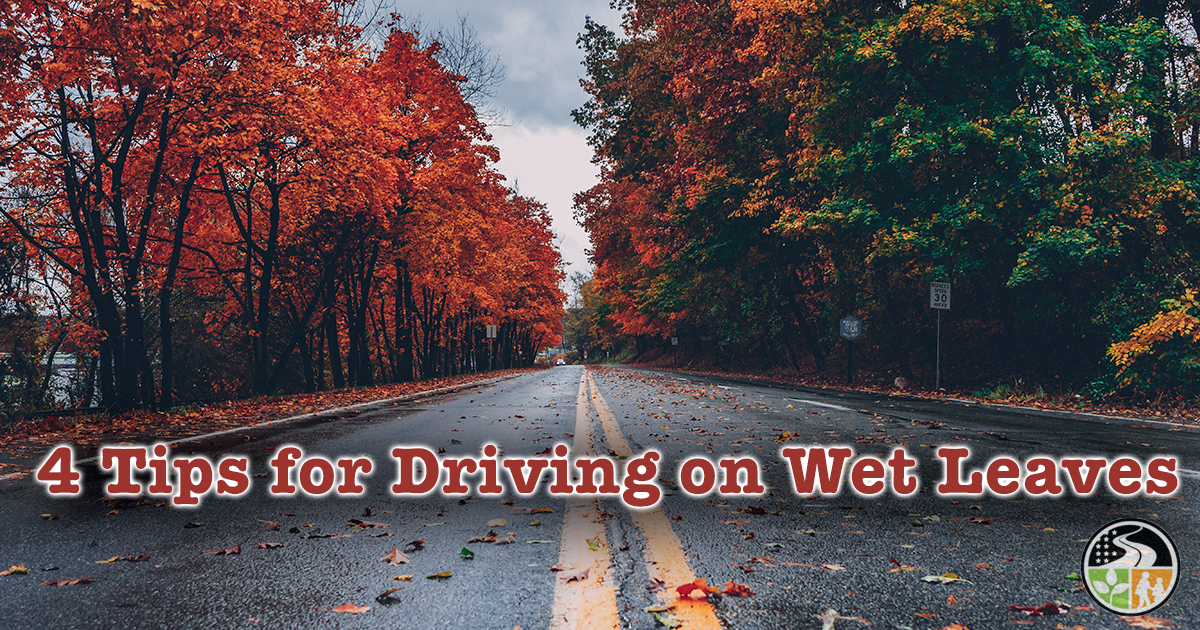Four Tips for Driving on Wet Leaves

One of the pleasures of driving in the fall is cruising down tree-lined roads and admiring those breathtaking autumn colors. However, for drivers, there are hidden dangers in those multi-colored leaves.
How leaves pose a danger
As leaves fall from the trees, they coat sidewalks and roadways and accumulate on the roads. The sight is a delight to behold, but the leaves make it difficult for drivers to see the pavement and obstacles that may be hidden from view, such as potholes. Keep in mind that you also may not be able to detect traffic indications that are painted on the pavement, such as crosswalks. Additionally, slippery surfaces pose a special threat on winding roads or on abrupt turns.
Like driving on ice
You’ve probably heard that wet leaves on the roadway are as slippery as ice. And that’s true!
If your vehicle hits wet leaves, what happens? Let’s imagine that you’re driving at 45 mph. How long does it take your vehicle to stop on a dry road? You will need 80 feet of roadway.
Next, imagine that you’re going the same speed, but the roadway is wet and coated with leaves. Now how long will it take your vehicle to stop? You will need 200 feet—more than double the distance!!!
Why does that happen? Because a film of water covers the top of those leaves, just as it does in the case of ice. Your tires aren’t very effective at stopping your vehicle when they’re sitting on water.
What should you do if your vehicle loses traction and begins to skid? Take your foot off the gas but DO NOT slam on the brakes. Braking hard will only increase the slide. Point your wheels in the direction you want your vehicle to go. As your vehicle straightens out, you’ll need to adjust your steering again.
What you can do to avoid the danger
1. Reduce speed. If you’re going slower, you’ll have more time to stop.
2. Maintain a healthy distance between you and the driver in front of you, in case that vehicle skids on leaves.
3. Clean off your vehicle. Before starting the engine, clean any leaves off the windshield, top of the car and hood.
4. Make sure your tires have good tread, which helps channel water away from the tires. Less water means more traction.
- 2025
- 2023
- 2022
- 2021
- 2020
- 2019
- 2018
- 2017

